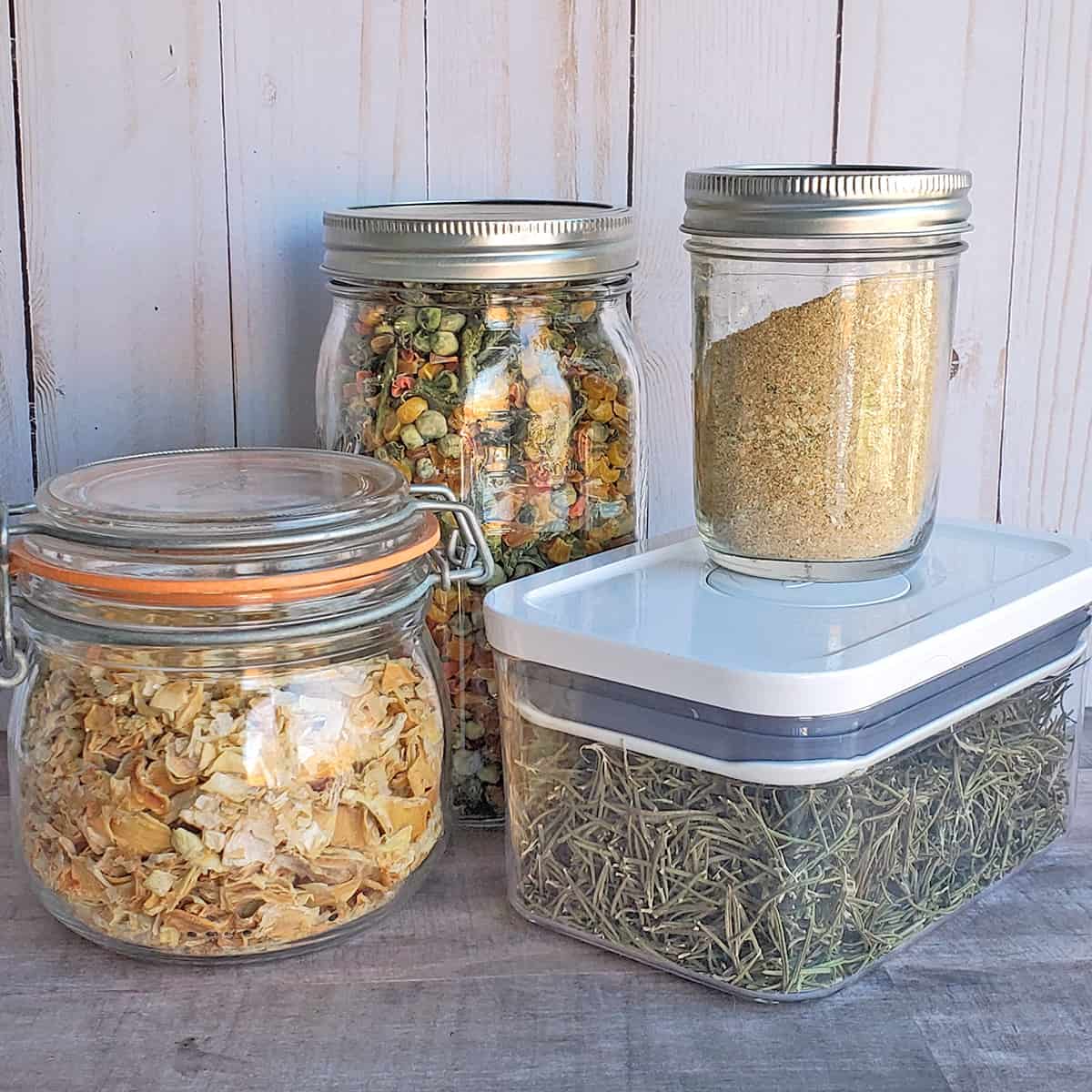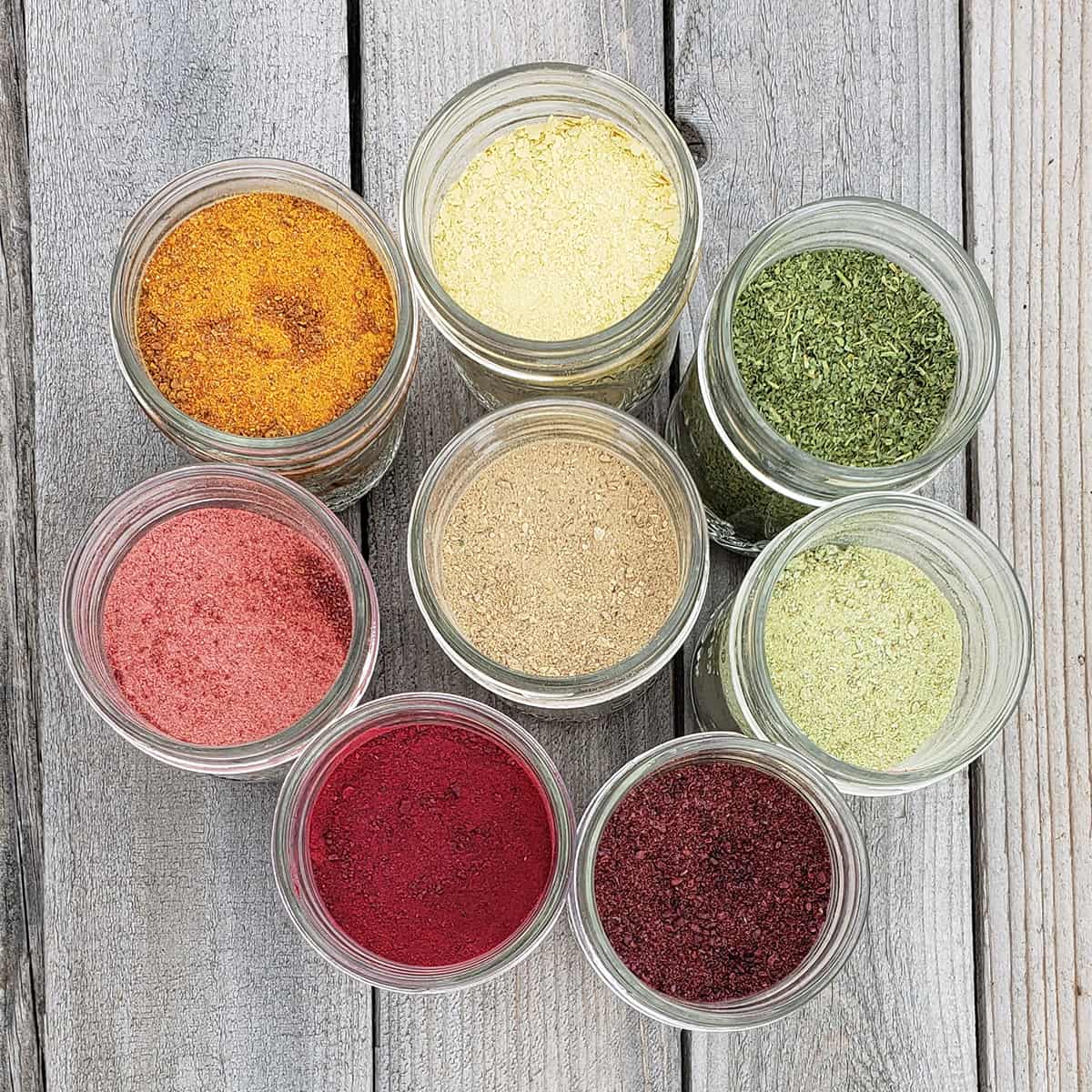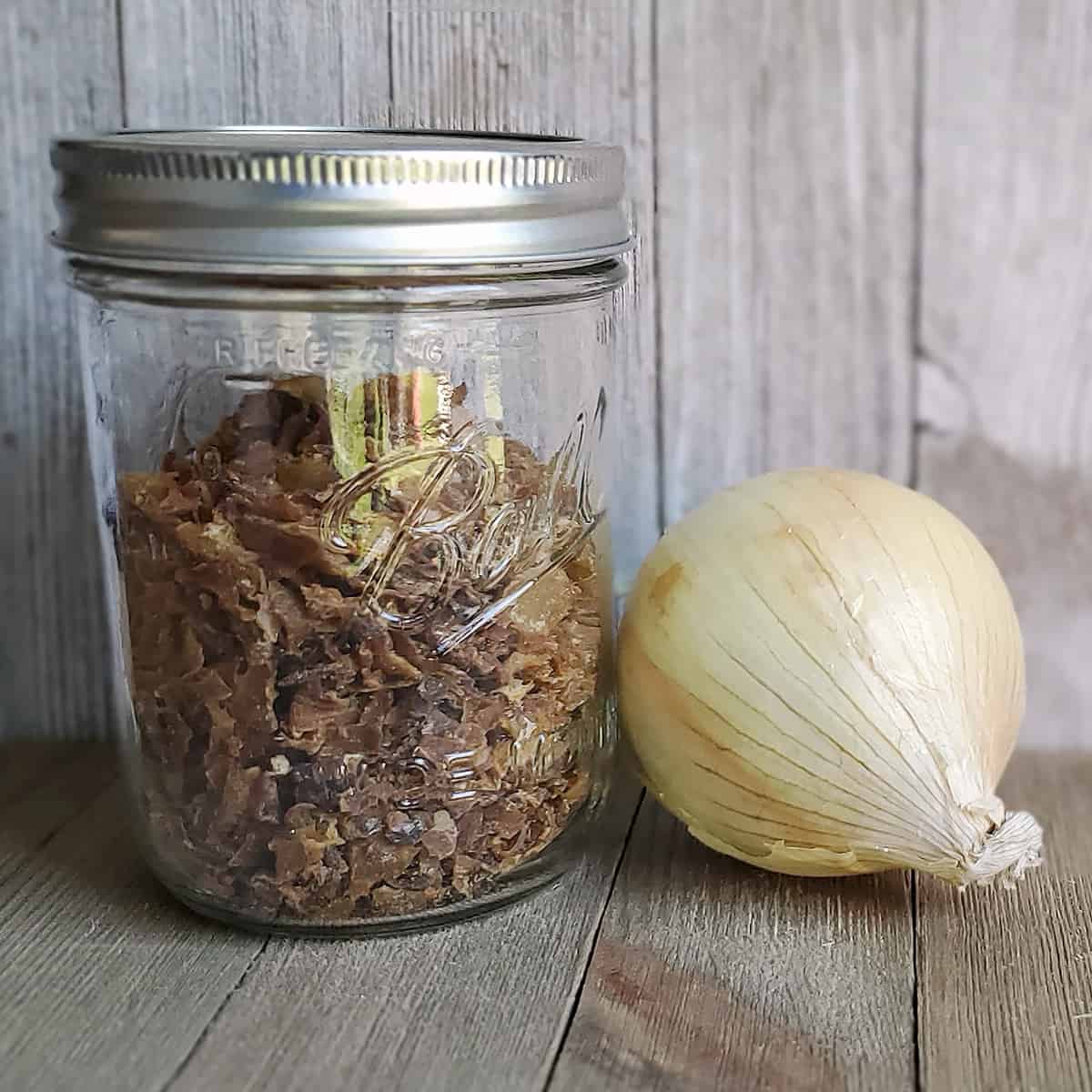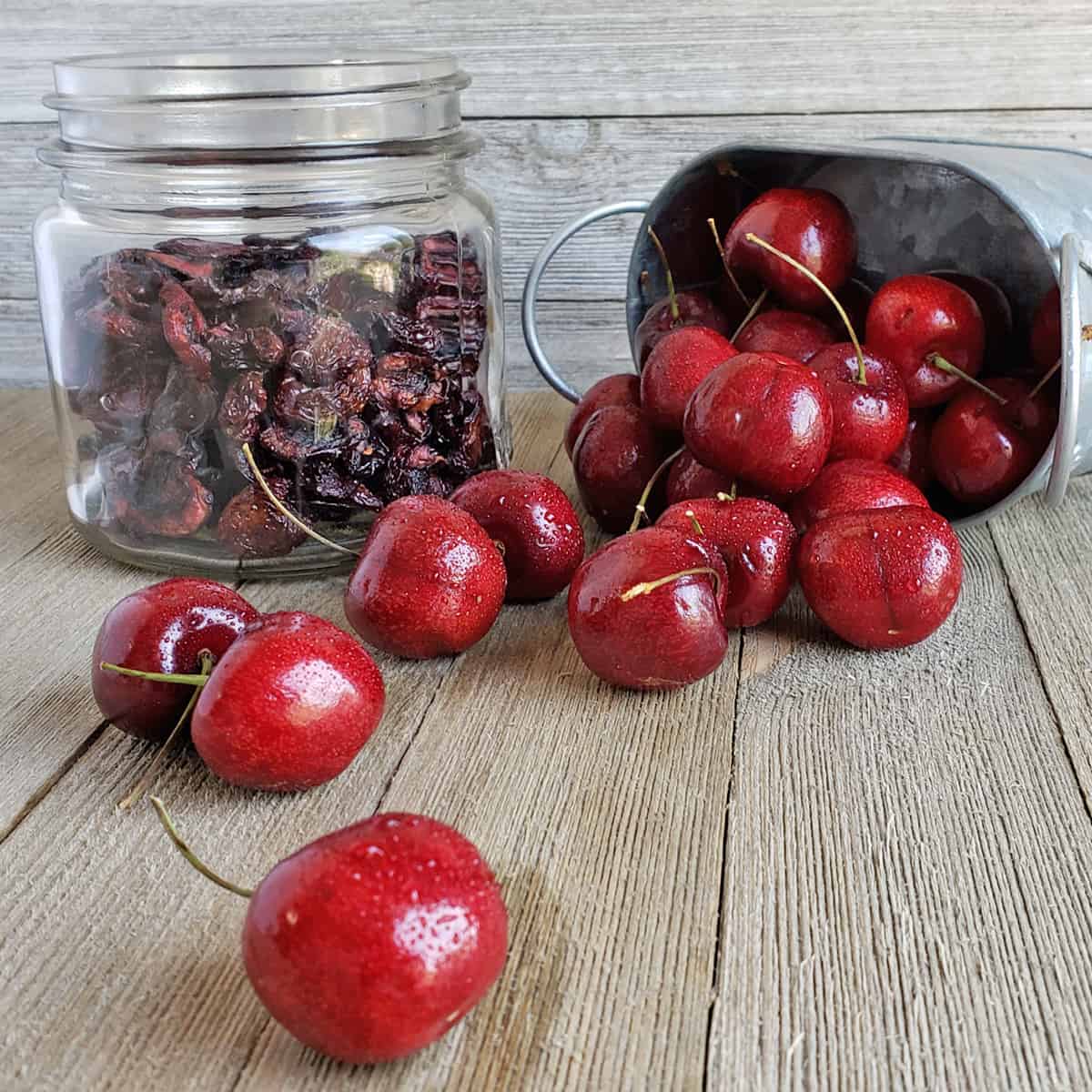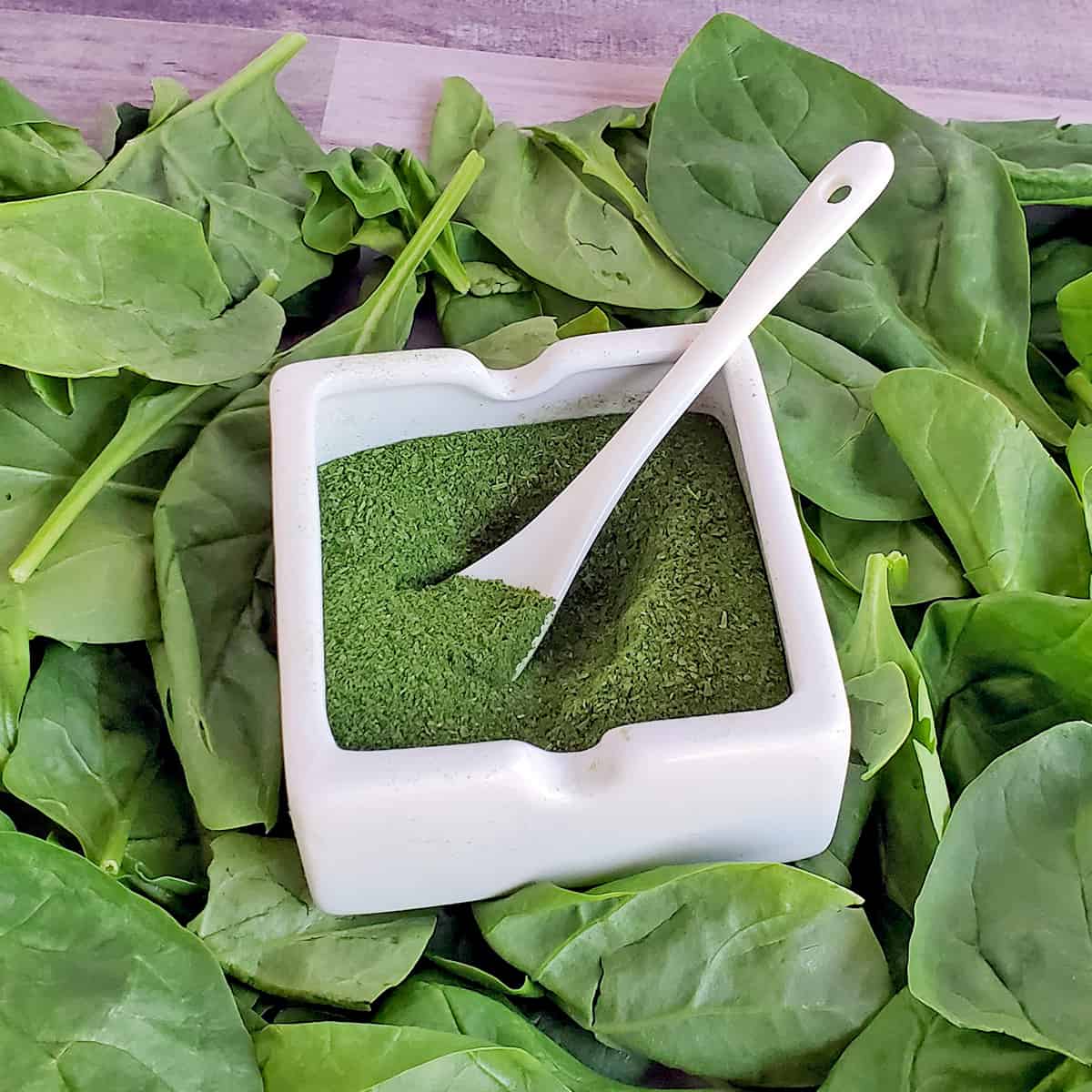How to Dehydrate Grapefruit
Learn to dehydrate grapefruit to store in your pantry all year. They are great for adding to water and teas, flavoring tea blends, and so much more!
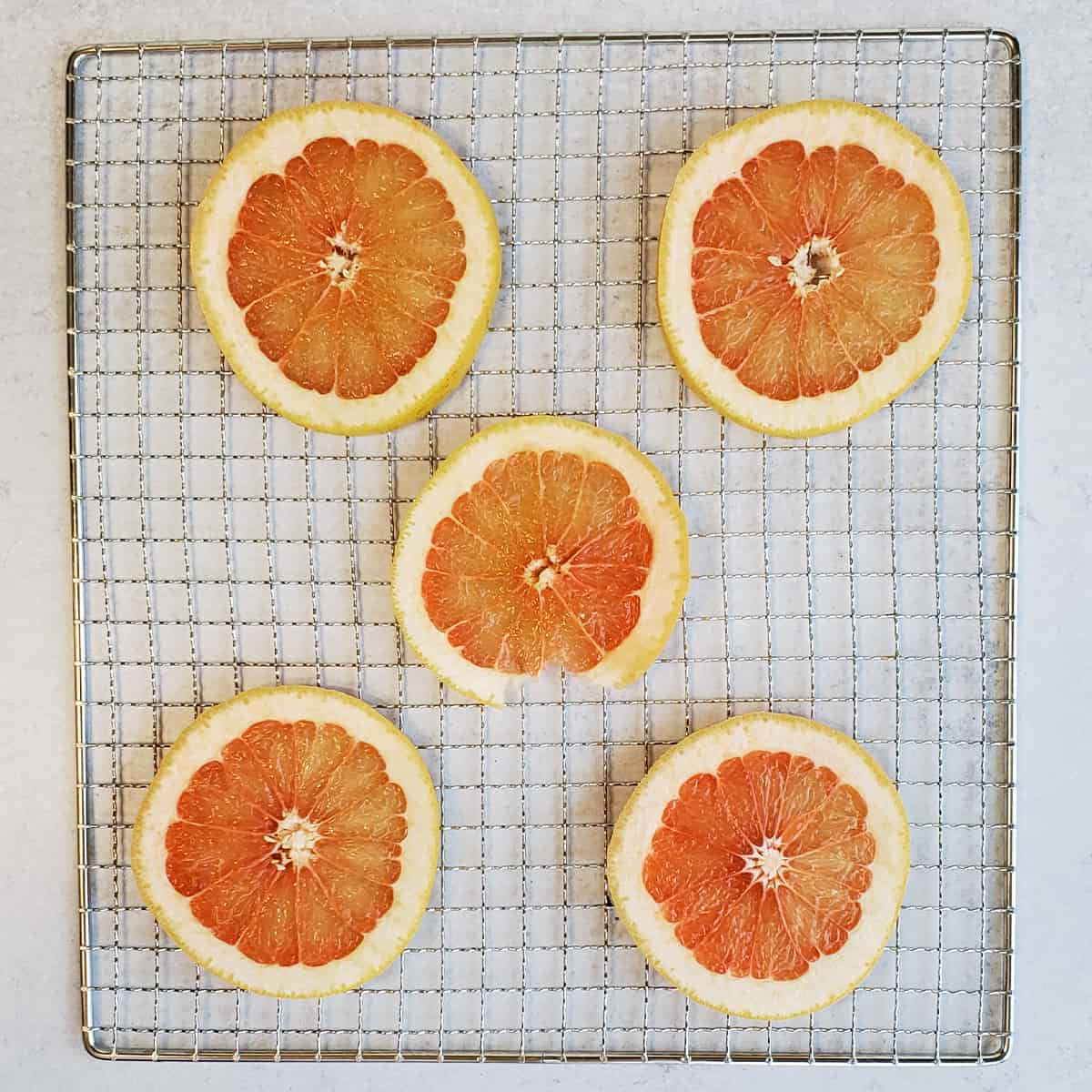
While grapefruit season is in the late winter and early spring in North America, you may be able to find varieties all year round in your local grocery store.
Grapefruit can make a great first dehydrator project because it’s a basic slice and dry application – and they are so beautiful after!
Best Grapefruit to Dry
While all grapefruits can be dried, here are the most common you’ll find. Remember, they have a distinctly sweet and tart (some call it bitter) flavor that intensifies in dehydrating.
- Star Ruby grapefruit
- Red grapefruit – tend to be more bitter
- White grapefruit
- Pink grapefruit
Other varieties will be less common, but still great to dry! Which is your favorite?
Tip: While growing up, I was always encouraged to eat grapefruit with a little sugar sprinkled on top to help with the tartness. But using sea salt is a better option! However, using salt in dehydrating will intensify the saltiness as it does not disappear in the dehydrating process.
How to Dehydrate Grapefruit
Quick-drying FAQ: Dry at 125°F/52°C or lower for 18-36+ hours, until slices snap when cooled.
Step One:
Wash grapefruit well. Even if using organic, you should soak and wash all citrus fruit to remove any residue and wax on the skin.
Soak in a 50/50 solution of water and vinegar for about 15 minutes. Scrub with baking soda if you feel it necessary.
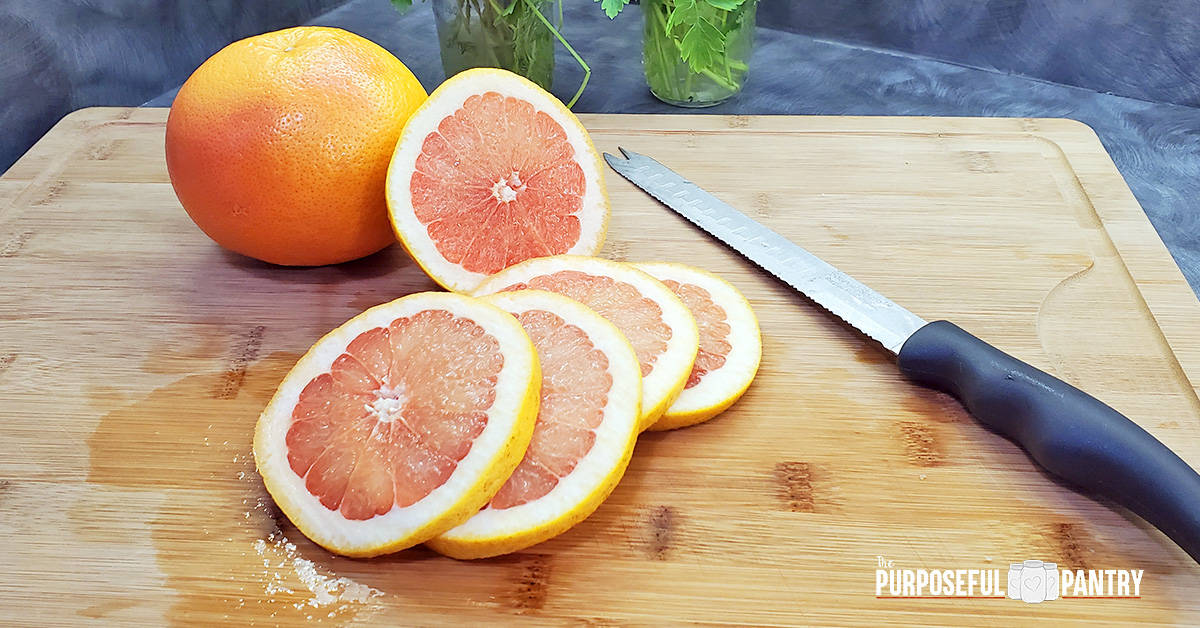
Step Two
Slice grapefruit into 1/4″ slices (6-7 mm). Using a good serrated bread knife works wonders to cut grapefruit by hand. But you can also use a meat slicer if you have one.
Tip: If using a mandoline or meat slicer, cut the end of the grapefruit fruit to give yourself a flat surface.
Tip 2: PLEASE remember to wear a protective cutting glove when using a mandoline. Even if you can use the guard that comes with the machine, hands and surfaces become slick.
Step Three:
Place slices on trays. You can pack them fairly close together without overlapping. Some airflow is nice, but they don’t need much space, nor will they shrink much.
Dry at 125°F/52°C or lower for 18-36+ hours.
While the recommended temperature for fruit is 135°F/57°C, citrus often browns during the drying phase as the sugars brown from the heat. Dropping the temperature can help prevent that, though you do have to add a little more time to the drying process.
Nutrition Tip: If you wish to keep all of the Vitamin C available in the grapefruit, you need to dry at 115°F/46°C, or lower, as the higher the temperature, the more nutrition you lose for Vitamins A & C. This does extend drying time.
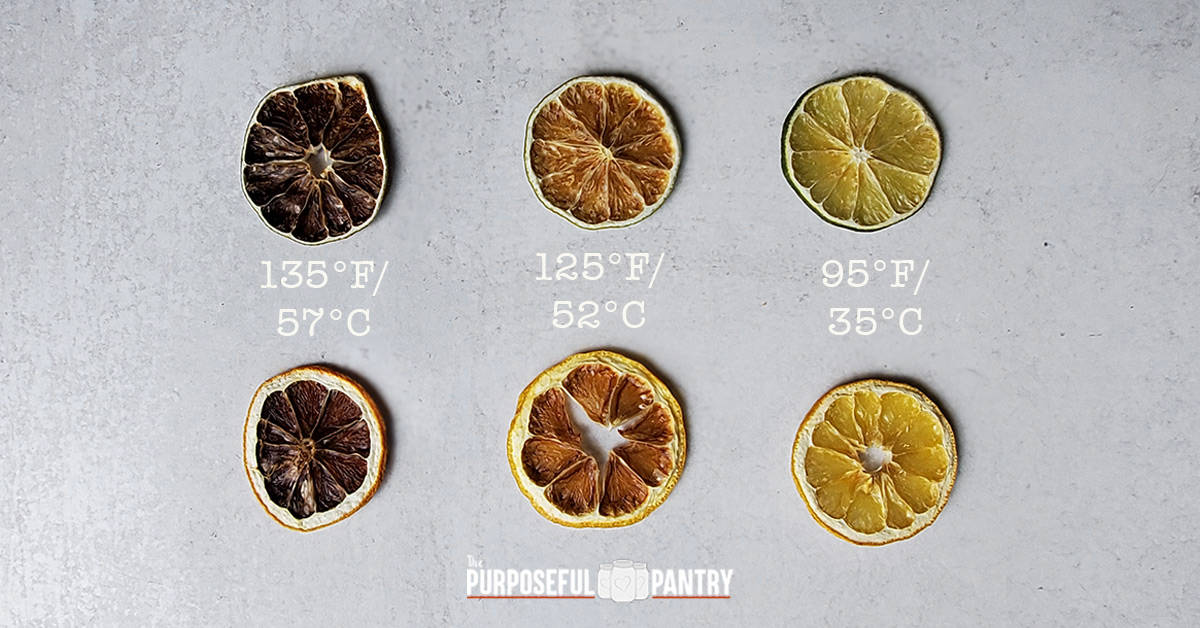
You can use a liner such as silicone mesh or parchment paper, but it’s not generally necessary.
Tip: Flip your grapefruit slices after the three to four hour mark, and every five hours to keep them from sticking to your trays.
Step Four:
Test. Allow a sample or two to come to room temperature. It is fully dry when you can snap it in two easily, and there is no moisture in the cells of the flesh.
Step Five:
Condition. The conditioning process is essential to allow all slices to come to a median humidity and check for any moisture issues. This helps prevent molding in storage.
Storage:
Store in an airtight container for up to eighteen months, though you’ll likely get a much longer time with proper storage techniques. Shelf life is best if you can store it out of direct sunlight in a dark, cool, dry place. I use mason jars, but mylar bags are good, too.
A note about storing dried grapefruit slices (and other citrus wheels). Your citrus may turn darker over time in storage. This is often caused by exposure to direct sunlight, but it does not affect the grapefruit.
Oven Directions:
- Slice grapefruit into ¼” slices with a sharp knife.
- Place parchment paper onto a wire cooling rack. Placing this onto a baking sheet can be helpful for control in moving in and out of the oven.
- Place grapefruit slices in a single layer.
- Turn the oven to the lowest temperature, preferably 170°F/60°C or below. Use a wooden spoon or oven-safe silicone oven pad to prop the door open to lower the temp if necessary.
- Flip grapefruit after 2 hours.
- Dry until completely dry, approximately 3-5 hours.
- Store as above.
How to Use Dried Grapefruit Slices
Your dehydrated slices will look so pretty in your containers, but they have many more uses than simply throwing them in a potpourri bowl.
- Slip into a glass of water or tea to bring a bright citrus flavor.
- Dip in chocolate to eat as treats or share as gifts.
- As a garnish on cocktails.
- Decorating (Remember to spray with a protective coating if displaying citrus on a wreath or other decoration for any period of time to seal it).
- Simmer in a saucepan of water with other citrus and mint to make a wonderful summery scent treat.
- Potpourri – add it to a summery version of potpourri to help bring a bright summer scent to any living space.
Dehydrate Grapefruit Zest
If you want the zest from any citrus variety, you can do it on its own, and still dehydrate the leftover citrus slices.
- Use your favorite citrus zester to remove the grapefruit zest (minus the white pith), lay it between two paper towels, and allow to air dry for a day or so.
- You can also place them in a coffee filter or onto dehydrator trays on your dehydrating trays and dry at 95°F/35°C until dry.
- Peel citrus like an apple, and place the zest slices onto dehydrator trays to dry at 95°F/35°C until crisp (approximately 8 hours).
Store in an airtight container and use in place of fresh zest if you’re out, by grinding in a coffee grinder or finely chopping into small slivers. If you want to see how it works, you can watch my video on dehydrating citrus zest.
How to Make Grapefruit Powder
Dry fruit thoroughly with the instructions above. Your dried grapefruit slices must be completely dry before powdering.
- Break slices up into the grinder of your choice. I often use a NutriNinja, but a coffee grinder or large blender work well, too.
- Pulse your grinder four or five times before commencing to a sustained grind. Please follow the directions of your grinder.
- Strain out powder with a fine mesh strainer, then grind the leftover bits again.
- Condition: Place powder on parchment paper on a cookie sheet in a warmed (but off) oven OR back into your dehydrator in coffee filters, muffin papers, etc. to dry for 15-30 min
- Allow to come to room temperature, then store in an airtight container, preferably with a moisture absorber. Use these tips to help prevent clumping in grapefruit powder.
Unlike other citrus varieties, grapefruit powder will be fairly sour – mix with some sugar and let the fun begin!
LEARN MORE: 25+ Ways to Use Fruit Powder
Dehydrating Citrus Varieties
You can get more specific information on drying your favorite type of citrus here:
- Citrus
- Grapefruit
- Lemon
- Lime
- Orange (Blood orange, mandarin, navel, Cara Cara, etc.)

Commonly asked questions
Typically, most dehydrated foods are best within a twelve to eighteen month window that you dry them, according to the National Center for Home Food Preservation. However, with proper airtight storage techniques, you’re likely to get much longer time from them.
While grapefruit peels are edible, you need to weigh the organic vs. conventional citrus debate about clean fruit.
Rinds can also be very bitter depending on the pith within the fruit and how much there is. I personally find the citrus peels too bitter because of the pith, and I dry the slices, then peel the rind off and eat the flesh of the fruit.
Time is relative when dehydrating. It depends on your machine, your home’s humidity, the moisture in your fruit, how thick you’ve cut the slices, etc. Use the time mentioned as a window of time, not an exact. Keep drying if they aren’t fully dried, yet!

Dehydrate Grapefruit
Equipment
Ingredients
- Grapefruit
Instructions
- Wash citrus well
- Slice into 1/4 inch slices
- Dry at 125F°C / 52°C for 18-36 hours
- Dry when they snap when cooled and no moisture is evident
- Condition
- Store in an airtight container
Video
Darcy’s Tips
-
- Roast chicken: Place slices in the cavity or make a bed for the chicken to sit on.
-
- Place slices on fish to bake.
-
- Slip into a glass of water or tea to bring a bright citrus flavor.
-
- Dip in chocolate to eat as treats or share as gifts
-
- As a garnish on cocktails
-
- Decorating (Remember to spray with a protective coating if displaying citrus on a wreath or other decoration for any period of time to seal it)
-
- Potpourri
-
- Use your favorite citrus zester to remove the zest (minus the white pith), lay between two paper towels, and allow to air dry for a day or so.
-
- You can also place them in a coffee filter or onto dehydrator trays on your dehydrating trays and dry at 95°F/35°C until dry.
-
- Peel citrus like an apple, and place the zest slices onto dehydrator trays to dry at 95°F/35°C until crisp (approximately 8 hours).
Nutrition
Nutritional information is an estimation only. Nutrient information for dehydrated foods is based on fresh. Use 1/4 of the servicing size for the same nutrient information. Thus 1 Cup of fresh fruit has the same sugars as 1/4 dried.
©ThePurposefulPantry. Photographs and content are copyright protected. Sharing of this recipe’s link is both encouraged and appreciated. Copying and/or pasting full recipes to any social media is strictly prohibited.


